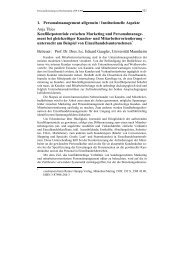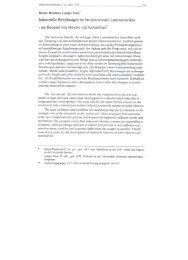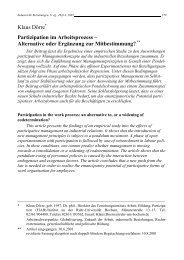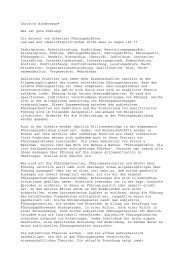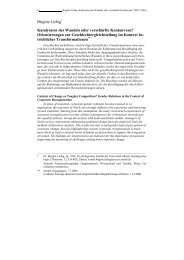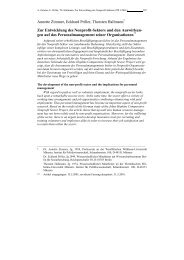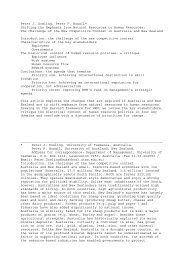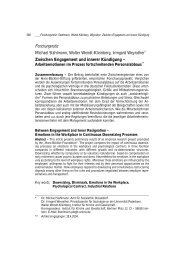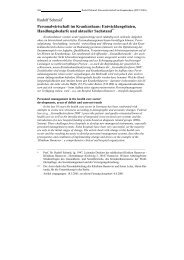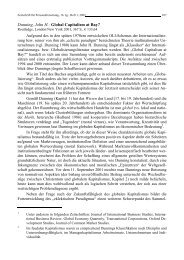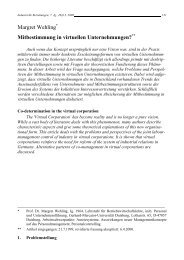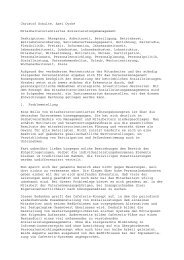1/98 - Rainer Hampp Verlag
1/98 - Rainer Hampp Verlag
1/98 - Rainer Hampp Verlag
You also want an ePaper? Increase the reach of your titles
YUMPU automatically turns print PDFs into web optimized ePapers that Google loves.
Roger Bennett<br />
were the status of the information source and the perceived relevance, reliability<br />
and credibility of the information transmitted.<br />
Transactions cost analysis (TCA)<br />
This is a theory which predicts that a business will perform within the firm<br />
whichever activities it can undertake at lower cost, while relying on outsiders<br />
(agents, distributors, consultancies, etc.) for activities in which the latter have a<br />
cost advantage (Williamson, 1<strong>98</strong>5). External ‘transactions costs’ such as the<br />
costs of searching for suitable intermediaries, monitoring the latter’s<br />
performances and enforcing contractual obligations would, according to<br />
Williamson (1<strong>98</strong>5) be low if the market for external services was highly<br />
competitive. This was because intense competition implied a large number of<br />
service providers from which the firm could choose (so that unsatisfactory<br />
outsiders could be replaced quickly and easily), and ensured fair prices for<br />
external services. Also the threat of replacement could compel suppliers<br />
constantly to attempt to improve their levels of service quality. A major<br />
proposition of TCA is that firms are more inclined to do things for themselves<br />
(distribution, advertising management or market research for example)<br />
whenever ‘transaction specific’ assets accumulate. Examples of transaction<br />
specific assets are specialised knowledge, experience, and working relationships<br />
built up over time and which are unique to marketing the product(s) in question.<br />
An independent outsider gaining such knowledge, experience, etc., is difficult to<br />
replace, even if it performs badly or otherwise abuses its position. It follows that<br />
the presence of transaction specific assets (‘asset specificity’, as it is known)<br />
should, ceteris paribus, create an incentive to internalise a function rather than<br />
rely on outsiders (Williamson 1<strong>98</strong>5; Klein et al. 1990).<br />
Further transactions costs were said to arise from the existence of ‘uncertainty’<br />
in local markets. Uncertainty could relate either to unpredictability in the<br />
decision-making environment or to ambiguities vis à vis the monitoring of<br />
outsiders’ performances and ascertaining whether they were complying with<br />
their contractual obligations. These considerations give rise to the following<br />
propositions in relation to Western companies’ desires to become involved in<br />
their CEE partners’ marketing efforts.<br />
P1. Intervention will be greater the higher the degree of asset specificity in<br />
relation to the engagement of external marketing services. Arguably, substantial<br />
asset specificity (i.e. the situation prevailing when extensive training, time,<br />
nurturing of business contacts, knowledge accumulation, etc, are necessary to<br />
market the end product successfully) results in Western firms wanting to manage<br />
the marketing of the end product rather than leaving this to the foreign partner.<br />
In other words the transferor will want to exercise significant control over the<br />
transferee’s marketing if it believes that the development of specialised<br />
marketing skills and relationships are necessary. Transferees might not be<br />
JEEMS 1/ 19<strong>98</strong> 11




